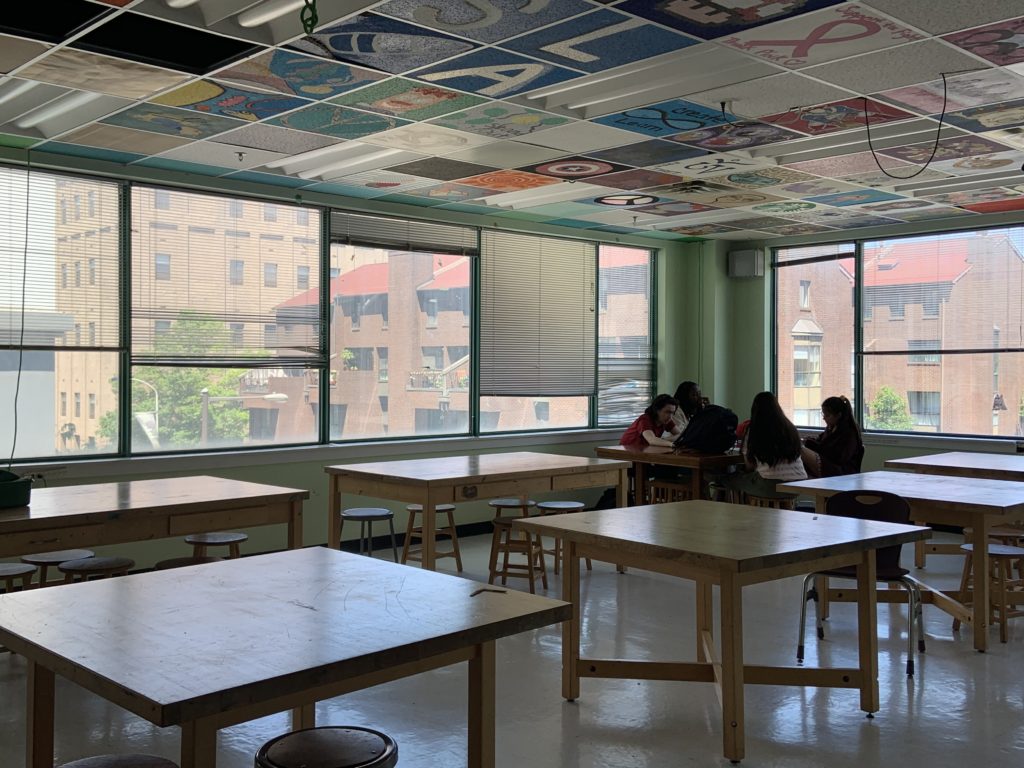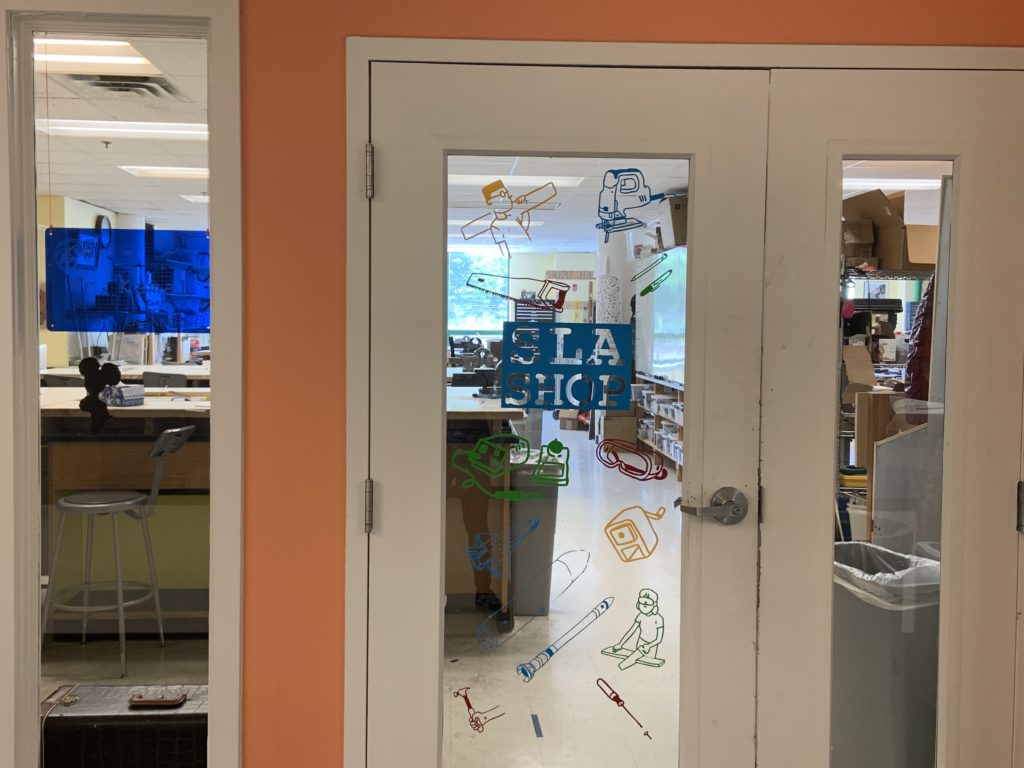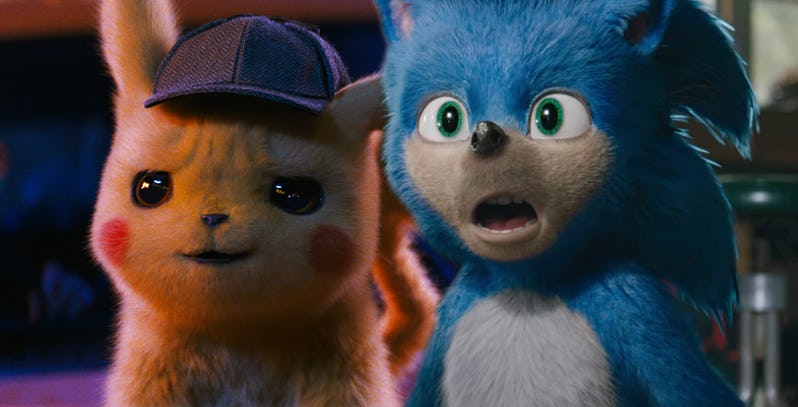Jayla Wright
Copy Editor


When people first hear of SLA they think it’s a school based in STEM. This assumption makes sense. The school is called Science Leadership Academy. Plus, we are known for our well-rounded science and engineering programs. However, SLA is not just filled with STEM-aligned kids. Students interested in the arts have a place in the community as well.
A problem arises when the students find that there is a divide between the arts and STEM at SLA.
A sample survey finds that a majority of students do find that STEM classes receives more respect and attention than the arts at SLA.
Where does this idea come from? Most likely budget cuts. Budget cuts causes fine arts to receive less funding. Leading to less resources in the art department. There’s also only one art class students are required to take in one half of their freshmen year. Other art classes are delegated as electives.
A majority of teachers do find that STEM and the arts are mostly equal at SLA. The problem lies less in SLA and more in the district and societal expectations.
Science teacher Surinder Kaur states, “A lot of the courses that fall under STEM are required for graduation where as [the] arts is like an elective. So that’s probably part of the reason why there’s more funding towards STEM than [the] arts.”
Dig Vid teacher Anna Walker-Roberts finds that the budget cuts targeting the arts can be due to the reliance of state testing.
Walker-Roberts states, “It’s really hard to test the humanities. It’s really hard to test anything with higher order thinking skills, even in the STEM world. It’s easy to test knowledge and what people can memorize like basic skills. And I think schools put such a focus on that kind of stuff because that’s what the state testing was, that’s where our funding came from, and that caused them to pull away from investing as much in these things that aren’t measurable. But it turns out that human well-being isn’t measurable.”
Many of the teachers consider humanity classes to be a part of the arts. Which is what causes them to see art equal to STEM due to the balanced ratio of arts and humanities classes to STEM courses. This mindset works when considering how strong SLA’s English program is. However, we still only have two language art teachers causing students who want to continue to learn foreign languages to use Rosetta Stone. A program which doesn’t come close to teaching the valuable skills gained from human teachers.
With budget cuts and the well-being of students in mind, teachers try to integrate the arts into their classes. For example, Dig Vid students use both technical and creative skills to create films while those in Advanced Computer Science can code games that allow someone to draw.
Math and Computer Science teacher Victor Hernandez tries to involve self expression in all of his classes. He has his own definition of art, stating that, “It’s the expression and communication of a creative idea or thought.” With this in mind, he opens up the idea of what art can be.
As well as integrating Stem and the arts, Engineering teacher John Kamal tries guide kids away from defining themselves as just art or STEM students.
Kamal states, “There’s some groups of kids that see themselves as that, and I try to actually encourage kids to think of themselves more broadly, and more holistically, and try to develop themselves as whole people, and I most admire and most enjoy being with people that the particular interest that they have like that is just a part of a broader look of the world and enjoyment of all aspects of living and of nature and relationships with people. The teaching cohort at this school is particularly interested in developing whole people and we celebrate especially when we see crossover between STEM and art programs.”
Students are the most affected by the perceived divide between the arts and STEM. They find that the art program needs some changes before it’s at the the same level as STEM’s.
Some of the biggest concerns are resources, art courses offered, and collaboration between art and STEM.
When students look at the art room, they find that it leaves a lot to be desired. Materials, such as paint and paint brushes, look worn and old. They find that updating these and other tools every few years can enhance the program. With new art supplies, those in art classes would be less likely to find the comparisons between the art and STEM courses so extreme.
There is also an issue with just having one art course. Students stated that those who have an interest in the arts either have to take the one art class offered, or look for electives in the humanities to satisfy their creative urges. While the art and humanity classes allow expression, students yearn for more specific mediums of art offered. Taking a general art class and electives that don’t align with a student’s interest makes it harder for them to know for sure what kind of art are they are interested in.
Art oriented senior capstones struggle under both of these issues. With low resources, students have to try their best to get materials they need and oftentimes use substitutions that don’t fit their artistic vision. And without specific art courses, art students have to teach themselves techniques through trial and error to make their craft better. This causes their progress to a completed capstone to be slow and arduous. If they had a source closely related to their topic they could question and learn from they would stumble less on understanding their interest and have a more satisfying capstone.
A common offered solution to this problem was a CTE program for art. This would allow art students to hone in on the different types of art they’re interested in and leave highschool with a certificate, just like the Engineering and Dig Vid students.
Senior Kiah Johnson drew inspiration from Spain’s education system, “In Spain, they have an interest and they stay throughout their interest throughout the whole high school career and then they take a test on that and then do whatever. So I think it should be some aspect of that after you reach a point, so maybe Sophomore year. Sophomore year you should atleast have an idea of what you like. So that would be simpler to just have a whole bunch of electives people have to take so they know what they like.”
Senior Eric Valenti believes the proposed art CTE program could allow for more direct collaboration between art and STEM students
Valenti states he desires, “more things are shown to people where art and STEM are doing STEAM and we learned more of how you can incorporate art and STEM. I wish there was a third track in SLA, like how there’s Dig Vid and Engineering, and maybe there is this art thing. There could be a project where we’re combining the programs. Like this week we’re doing an Art and Engineering thing where the Art and Engineering kids have to work together and create something which is one of their benchmarks. Or the art and Dig Vid kids are like ‘You guys have to make a movie’ and then combine all three of them.”
STEM courses are mostly considered by the student body to be given more attention than the arts. However this is not an issue made by our teachers and staff, but one made by the decisions of the district. SLA still can bridge this divide. Moving into a new building is an opportunity to create improvements in the art and STEM classes, and the environment at SLA encourages students to share opinions that can guide any future changes.
The teachers want both the arts and STEM to succeed, as the lives of students would benefit. Spanish teacher Joselyn Hernandez states, “I do believe that art should be maintained in schools because it fosters creativity.”


